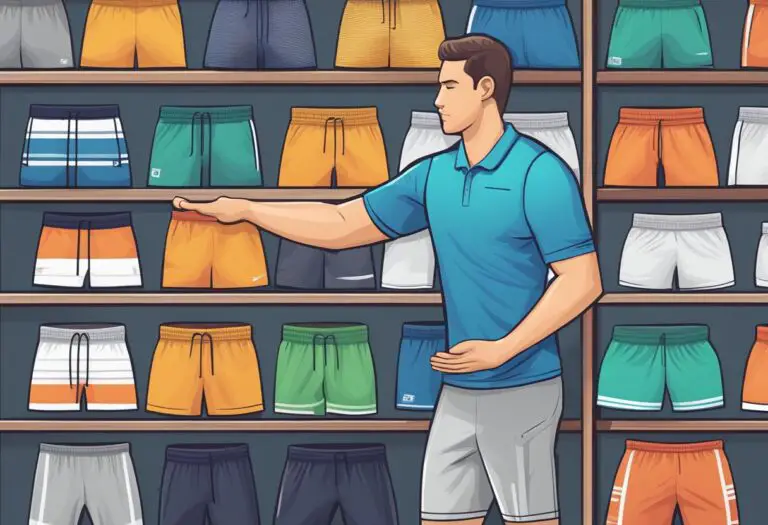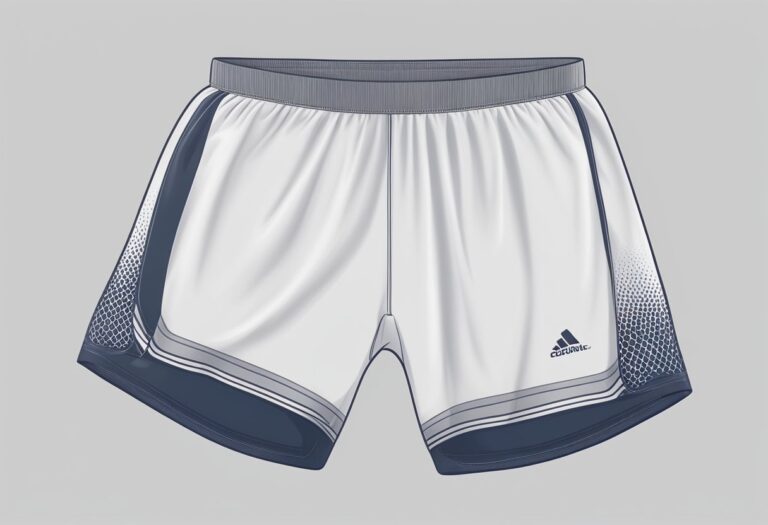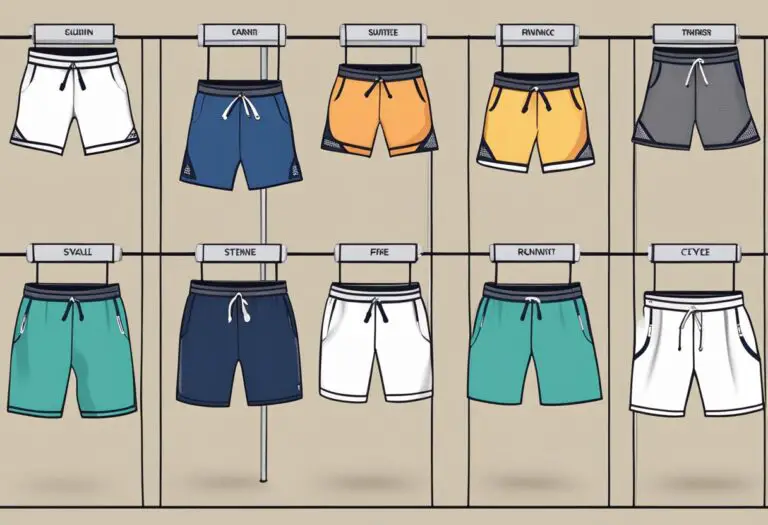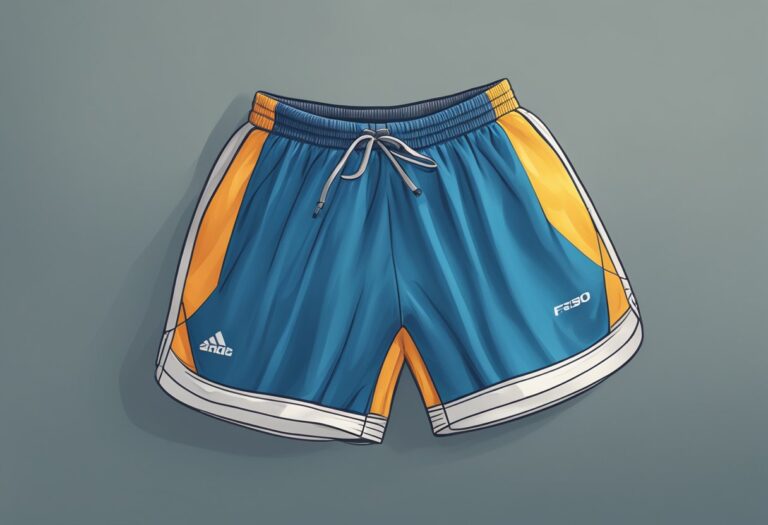How can I prevent chafing while wearing running shorts
How can I prevent chafing while wearing running shorts
Chafing is a common and painful problem for runners, especially when wearing shorts. The constant rubbing of skin against fabric can cause irritation, redness, and even blisters. However, there are several ways to prevent chafing and make running more comfortable.
One of the most effective ways to prevent chafing is to wear moisture-wicking shorts made of breathable materials. These types of shorts will help to keep the skin dry and reduce friction between the fabric and the skin. It’s also important to choose the right size and fit to ensure that the shorts don’t ride up or bunch, which can increase the risk of chafing.
Another way to prevent chafing is to use a lubricant or anti-chafing balm. These products can be applied directly to the skin in areas prone to chafing, such as the inner thighs or underarms. They create a barrier between the skin and fabric, reducing friction and preventing irritation. By following these tips, runners can enjoy a more comfortable and pain-free workout.
Understanding Chafing

Chafing is a common problem faced by runners, especially while wearing running shorts. It is the result of skin rubbing against skin or clothing, causing irritation and inflammation. The friction can cause discomfort, pain, and even bleeding in severe cases. Understanding the causes and common chafing zones can help prevent this problem.
Causes of Chafing
Chafing is caused by friction between the skin and clothing or skin and skin. This friction can be caused by several factors, including:
- Moisture: Sweat and moisture can increase friction, making chafing more likely.
- Body shape: Areas where skin rubs against skin, such as thighs and underarms, are more prone to chafing.
- Clothing: Tight-fitting or rough-textured clothing can cause friction and increase the risk of chafing.
- Activity level: High-intensity activities like running can increase the risk of chafing.
Common Chafing Zones
Chafing can occur in various parts of the body, but some areas are more prone to it than others. Common chafing zones include:
- Thighs: The friction between the thighs while running can cause chafing.
- Underarms: The skin in the underarm area rubs against clothing, causing chafing.
- Nipples: Friction between the shirt and nipples can cause chafing, especially for men.
- Groin: The skin in the groin area rubs against clothing, causing chafing.
By understanding the causes and common chafing zones, runners can take steps to prevent chafing while wearing running shorts.
Selecting the Right Running Shorts
When it comes to preventing chafing while wearing running shorts, selecting the right pair of shorts can make all the difference. Here are some material considerations, fit and design factors to keep in mind.
Material Considerations
The type of material used for running shorts can play a significant role in preventing chafing. Look for materials that are breathable, moisture-wicking, and lightweight. Here are some common materials used in running shorts:
- Polyester: This synthetic material is lightweight, breathable, and quick-drying, making it a popular choice for running shorts.
- Nylon: Another synthetic material that is lightweight and durable, nylon is often blended with other materials for added comfort and flexibility.
- Spandex: This stretchy material is often blended with other materials to provide a snug and comfortable fit.
- Mesh: Mesh panels or inserts can provide added ventilation and breathability, helping to prevent chafing and discomfort.
Fit and Design
The fit and design of running shorts can also impact chafing. Here are some factors to consider:
- Inseam length: Longer inseams can help prevent chafing on the inner thighs, while shorter inseams can provide greater freedom of movement.
- Waistband: Look for a waistband that is snug but not too tight, as a tight waistband can cause chafing and discomfort.
- Seams: Flatlock seams can help prevent chafing by reducing friction, while poorly placed or bulky seams can cause irritation.
- Compression: Compression shorts can provide added support and reduce muscle fatigue, but make sure they fit properly to prevent chafing.
By considering these material considerations, fit and design factors, runners can select the right pair of running shorts to help prevent chafing and discomfort.
Preventative Measures
Chafing can be a common problem for runners, especially when wearing running shorts. However, there are several preventative measures that can be taken to reduce the risk of chafing.
Proper Hygiene
One of the most important preventative measures is proper hygiene. It is important to keep the affected area clean and dry to reduce the risk of chafing. After a run, it is recommended to take a shower and thoroughly dry the skin before putting on fresh clothes.
Lubrication Strategies
Another effective preventative measure is the use of lubrication. Lubricants such as petroleum jelly or anti-chafing balms can help reduce friction between the skin and clothing, reducing the risk of chafing. These products should be applied to areas that are prone to chafing, such as the inner thighs or underarms.
When using lubricants, it is important to apply them generously and evenly to ensure complete coverage. It is also recommended to reapply the lubricant during longer runs to maintain its effectiveness.
In addition to proper hygiene and lubrication, wearing moisture-wicking clothing can also help reduce the risk of chafing by keeping the skin dry. Choosing the right size and fit of running shorts can also make a difference in preventing chafing.
By following these preventative measures, runners can reduce the risk of chafing and enjoy a more comfortable running experience.
During the Run

Chafing can be a real problem for runners, especially during long runs. However, there are several techniques that can be used during the run to prevent chafing.
Adjustment Techniques
One of the most effective ways to prevent chafing during a run is to adjust the fit of the running shorts. This can be done by tightening or loosening the waistband, adjusting the length of the shorts, or even wearing compression shorts underneath.
Another technique is to use anti-chafing products such as powders, creams, or lubricants. These products can help to reduce friction and prevent chafing in areas such as the thighs, groin, and buttocks.
Hydration and Nutrition
Staying hydrated and properly nourished can also help to prevent chafing during a run. Dehydration can lead to dry skin, which can increase the risk of chafing. It is important to drink plenty of water before, during, and after the run to stay hydrated.
Eating a balanced diet that includes foods rich in vitamins and minerals can also help to prevent chafing. Foods such as fruits, vegetables, and whole grains can help to keep the skin healthy and reduce the risk of chafing.
By using these techniques, runners can prevent chafing and enjoy a comfortable run.
Post-Run Care
Skin Care
After a run, it’s important to take care of your skin to prevent chafing. The first step is to clean the affected area with mild soap and water. This will help remove any sweat, dirt, or bacteria that may have accumulated during the run. After cleaning, dry the area thoroughly with a clean towel.
Once the skin is dry, apply a moisturizer or anti-chafing cream to the affected area. These products help reduce friction between the skin and clothing, which can prevent chafing. Look for products that are specifically designed for runners and contain ingredients like aloe vera, shea butter, or vitamin E.
If you have already developed chafing, apply an ointment or cream that contains zinc oxide or petroleum jelly. These products can help soothe irritated skin and promote healing.
Clothing Maintenance
Proper clothing maintenance is also important for preventing chafing. After a run, wash your running shorts and other clothing in cold water with a gentle detergent. Avoid using fabric softeners or bleach, as these can irritate the skin.
When drying your clothing, avoid using a dryer on high heat. Instead, hang your clothing up to air dry or use a low-heat setting on the dryer.
Before your next run, make sure your running shorts are clean and dry. If you have any areas of chafed skin, cover them with a bandage or adhesive tape to prevent further irritation.
By following these post-run care tips, you can help prevent chafing and keep your skin healthy and comfortable during your runs.







